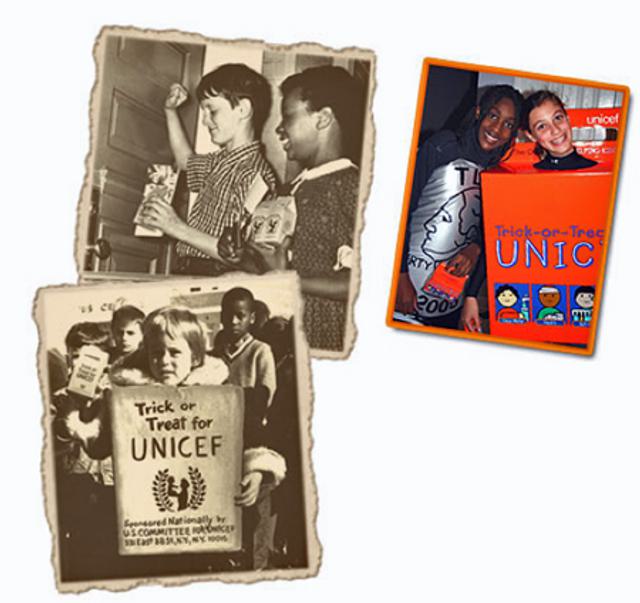UNICEF: trick or treat
- Exhibited by
- SOFII
- Added
- August 31, 2009
- Medium of Communication
- Face to face
- Target Audience
- Single gift
- Type of Charity
- Children, youth and family, poverty/social justice
- Country of Origin
- Canada, International, USA
- Date of first appearance
- 1950
SOFII’s view
A simple idea that has grown over many years. A fun way for children to help other children, which has lasted for nearly sixty years, is now supported by hundreds of thousands of young people plus their teachers each year and is still going strong.
Creator / originator
A Sunday school class in Philadelphia in 1950.
Summary / objectives
Trick or treat for UNICEF is a valued Halloween tradition that has continued over the past 50 years with children carrying the trick or treat for UNICEF collection boxes on Halloween night. Instead of collecting sweets or candy, children all over North America have collected coins as they go door-to-door dressed as wee witches or pint-sized super heroes. The money they collect is given to UNICEF, often through their schools, to improve the lives of less fortunate children in the world.
Background
It all began in 1950 when a Sunday school class in Philadelphia, USA decided to collect coins instead of candy on Halloween. They sent their inspirational donation of $17 to UNICEF and an idea was born. Canadians joined in and sent Halloween collections to UNICEF in the United States. Then, in 1955, the Canadian UNICEF Committee was formed. In the first year Canadian children collected $15,000. Since then, millions of Canadian children have raised more than C$90 million trick-or-treating for UNICEF. Trick or treat for UNICEF has moved on from coin collection to month long fundraising drives in schools and at home. In 2000, 31 October was declared national UNICEF day by the federal government in Canada.
Special characteristics
Trick or treat for UNICEF is best known through its collection boxes. For years children throughout North America have collected coins on Halloween to give to UNICEF for less fortunate children. In Canada this year, children will be going door to door with bags for candy again – the fundraising will already be `in the bag` from the month long fundraising drive throughout October. Go to http://www.unicefusa.org and http://www.unicef.ca for more information.
Over the past few years, the US Fund for UNICEF and UNICEF Canada have made the trick or treat for UNICEF campaign more engaging, educational and fun for kids, as well as relevant, flexible and easy to implement for parents and teachers. They have also been listening to the concerns expressed by teachers, schools and the public about the logistical and safety challenges of the traditional door-to-door coin collection.
Influence / impact
The US Fund for UNICEF conducted market research to understand the national reach and influence of the trick or treat for UNICEF programme in the United States and to measure the programme’s health in the US marketplace. This survey found that trick or treat for UNICEF is the most recognised fundraiser where children help people who are in need.
Merits
Children are some of the best fundraisers in the world and through trick or treat for UNICEF they learn when they are young that making a small sacrifice (collecting coins instead of candy) can make a difference. Telling children about the needs of other children in poorer parts of the world can have a lasting impact on their lives.
This is an enduring fundraising campaign that has changed through time and is still relevant and popular with hundreds of thousands of young fundraisers today.


Also in Categories
-
















